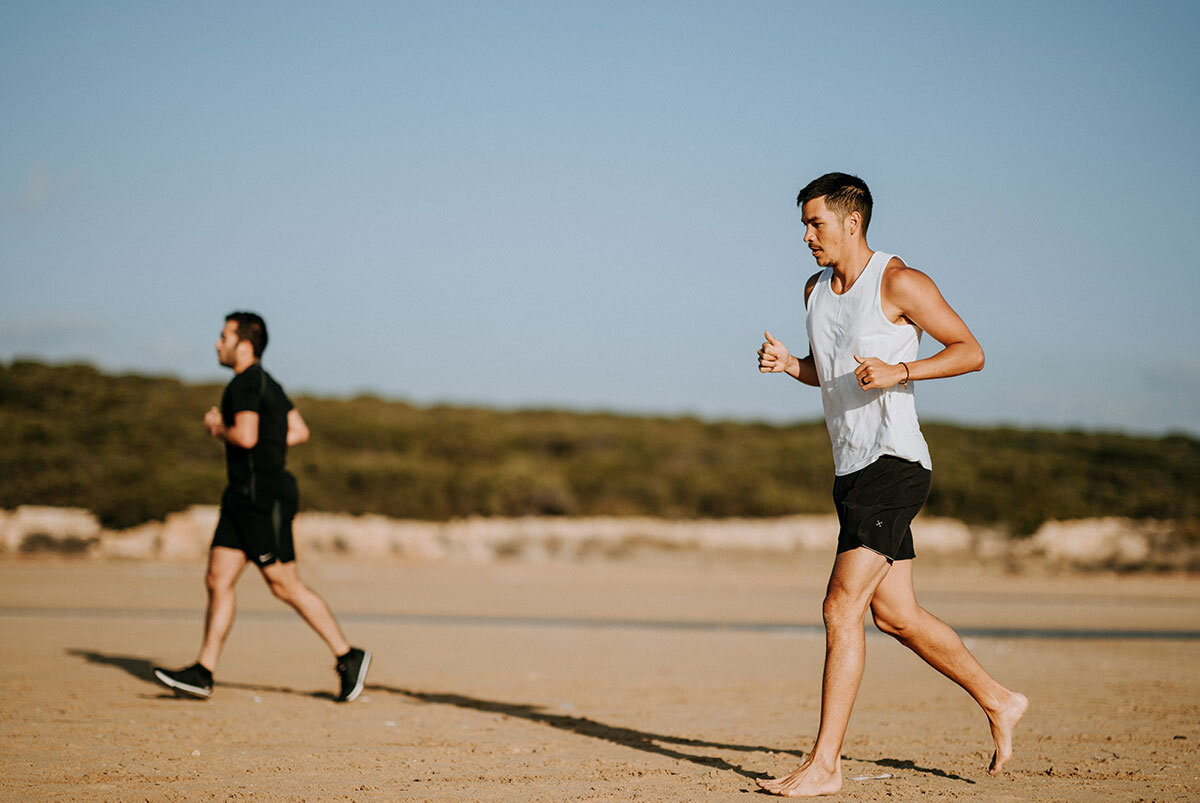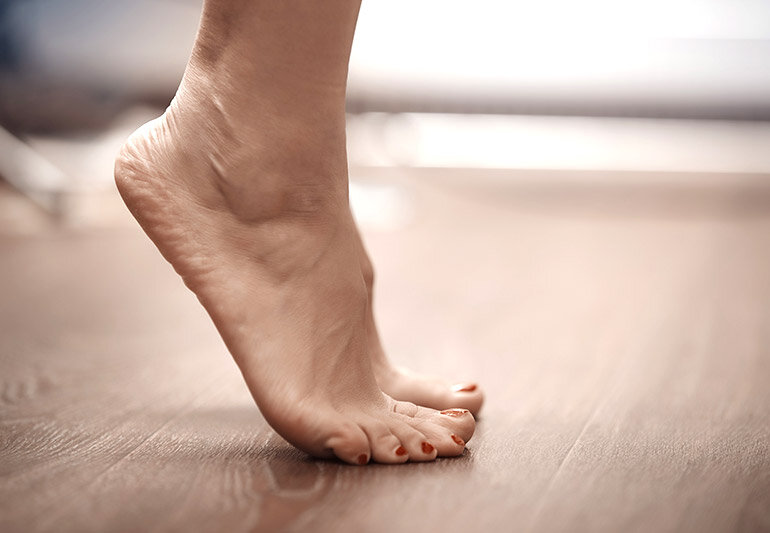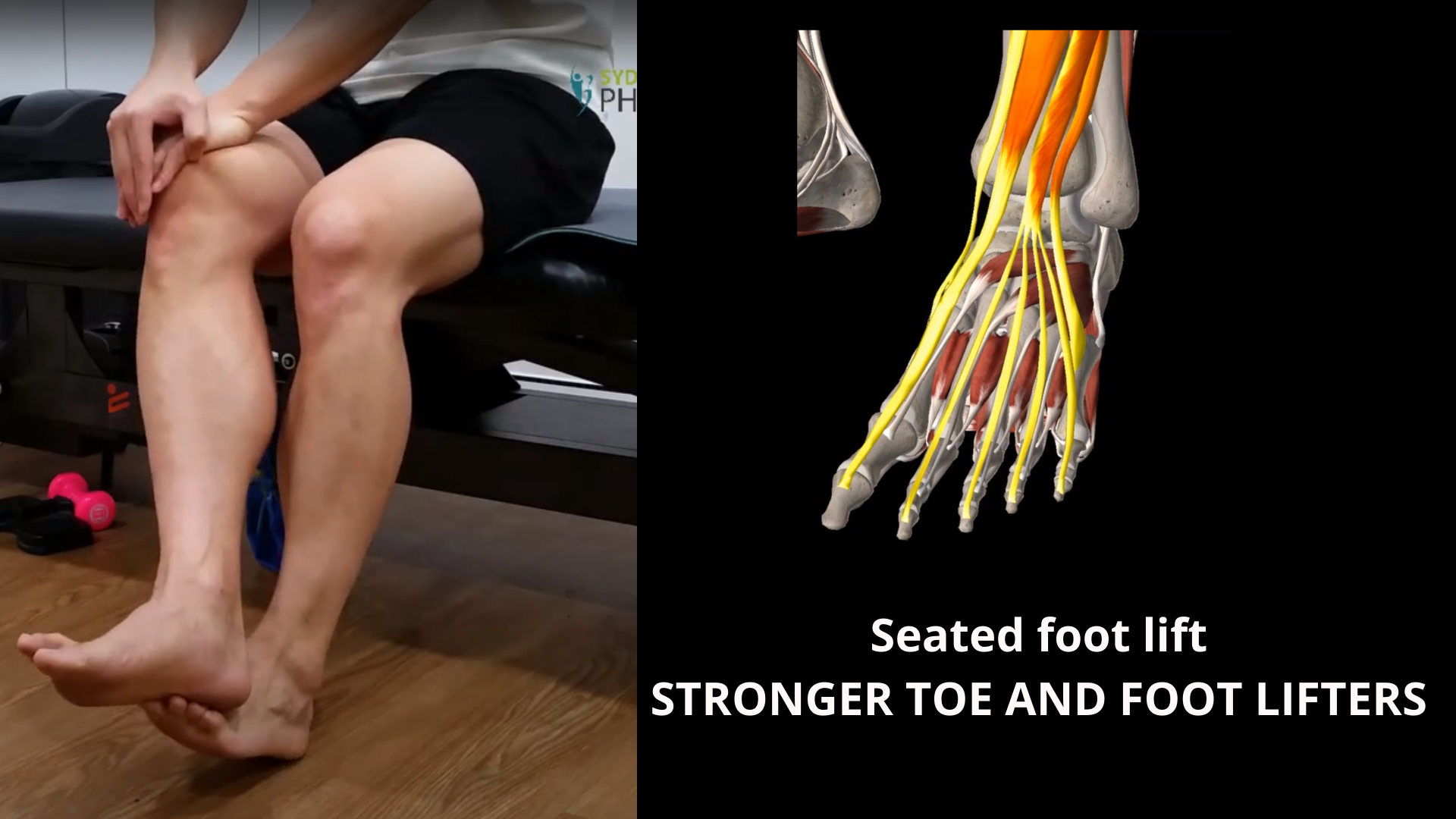Barefoot strengthening helps you to conquer the distance
Strengthening the foot by itself will help you to run more effectively and more injury-free. Specifically, barefoot running is a very effective way of strengthening the foot.
We now have many types of running shoes. Many do not know that a good way of strengthening your feet is to run a short distance barefooted.
Short-stint of a barefoot running session is a means to improve the strength of the foot. It has also shown benefits for the Achilles tendon, as well as helping with injury prevention for long-distance runners. Spending 5-10min to run barefooted on the sand and over a deck can stimulate muscles tendons that wouldn't have activated as much when running with shoes. This blog introduces the benefits of barefoot training and tips on rehabilitation after a foot injury.
Long term benefits of short-stint running barefoot
Develop a more natural running style.
Prevents Achilles tendon injuries.
Improves ankle stability, strength, and balance in the long run.
The evidence of barefoot running benefits the foot
Ground contact time (in seconds) during barefoot running was significantly shorter than shoe running (0.245 vs. 0.255) – which means a lot more efficient running movement.
Stride length (step length in meters) was significantly lower when barefoot running (2.19 vs. 2.34).
Barefoot running has a reduced initial impact with each step.
Less energy was required to run with bare feet than compared to running with shoes. (Squadrone, et al. 2009)
So evidence shows that barefoot running helps you to develop a more effective running style. Here in Sydney Health Physiotherapy, we suggest runners who are at the last phase of recovering from a foot or ankle injury have a short barefoot running session for 5-10 minutes as a means of graded return to sports.
Ankle strengthening will benefit running
Barefoot running should be coupled up with ankle strengthening exercises to give the maximum benefits for runners. We recommend an ankle strengthening program before you return to running. After that, we also suggest running barefooted on grass and sands before running on pavement.
Tips on the final phase of rehabilitation
Training method for long-distance running
Starting slow starting with 5-10 minutes each run on smooth surfaces then progressing to 15 min over several weeks.
Choose friendly terrains such as the beach, soccer fields, and gradually progress to firmer surfaces.
Perform balance and strength-based exercise programs barefoot.
Running barefoot is a slow progression
Evidence shows that prolonged periods of barefoot running can still increase the risk of your injury (Divert, et al. 2005). In this case, barefoot running of 5-10 minutes will be sufficient to strengthen the foot.
Proper running shoes are still important
Not accidentally treading on painful or dangerous objects on the ground.
Improved ankle support: after a recent ankle injury or with weak ankle muscles.
No slow progressive running routine: barefoot running as It requires a slow adaption routine/phase.












